PANDEMIC SKY
Dawn Olenick snapped this beautiful sunset pic at the beach in her hometown of Baiting Hollow at the end of April.
Send your Photo of the Week to [email protected]
PANDEMIC SKY
Dawn Olenick snapped this beautiful sunset pic at the beach in her hometown of Baiting Hollow at the end of April.
Send your Photo of the Week to [email protected]
MEET BETTY BOOP!
This week’s shelter pet is an eight-year-old female pit bull terrier mix named Betty Boop, currently waiting at the Smithtown Animal Shelter for a family to adopt her. Named after the iconic cartoon diva (who was originally designed as a dog), Miss Boop can’t get enough of people, and volunteers at the shelter can’t get enough of her!
This ball of love was brought in to the shelter by a good samaritan who found her looking lost at a nearby train station. It was quickly discovered how attached she gets to everyone when she cried watching the good samaritan leave. She doesn’t like to see any of her new friends go!
Betty Boop is the perfect combination of calm, affectionate, and sweet all rolled into a 70 pound ball of love. Her eyes say it all; she oozes love and adoration for every new person she meets. While she’s great with children, she would prefer to be the only pet in her home.
*Due to the health risk presented by the COVID-19 pandemic, there will be limited public access to the shelter. If you are interested in meeting Betty Boop please fill out an adoption application online at www.townofsmithtownanimalshelter.com.
The Smithtown Animal & Adoption Shelter is located at 410 Middle Country Road, Smithtown. For more information, call 631-360-7575.
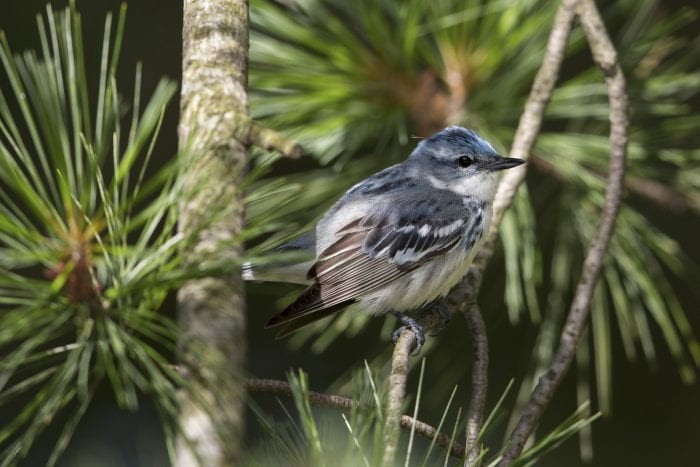
By John L. Turner
For many years there has been a broad public perception that the primary effect of dumping excessive amounts of carbon dioxide (CO2) into the atmosphere, from the burning of fossil fuels (and the release of other gases such as methane from landfills, gas and oil wells, and other sources), was the warming of the atmosphere — a phenomenon that was first called “global warming” or the “greenhouse effect.”
Higher average daily and annual temperatures in the atmosphere have, indeed, occurred, so that label is partially correct — 2019 was the second hottest year ever measured, only slightly behind 2016, and according to records of the National Oceanic and Atmospheric Administration, the past five years are the warmest years on record in the 140-year span the federal government has been measuring atmospheric temperatures; today’s earth is more than two degrees (Fahrenheit) warmer than it was in 1950.
But while the term “global warming” has become shorthand to describe the effect increasing concentrations of atmospheric CO2 have on climate, a wide number of scientists recognize that warming temperatures are but one of many adverse environmental effects caused by too much atmospheric CO2 and, in fact, in some places excess CO2 has caused cooling.
Thus, the term “global warming” both is inaccurate and too restrictive to capture the full range of ecological/environmental impacts and resultantly has fallen into disfavor, replaced by the more accurate label of “climate change” or “climate disruption”. But even these more accurate, expansive labels don’t completely portray the full suite of environmental effects occurring around the world, effects that go far beyond climate, as concerning as that alone would make the climate crisis.
Below is a description of but a few of the many commonly recognized “faces” of climate change that have emerged over the past decade:
More extreme and destructive weather — A warmer atmosphere has more energy and holds more water vapor. This has resulted, in the past decade, of more intense weather events such as increased rainfall and associated flooding, hurricanes, and in some places just the opposite: droughts, often resulting in catastrophic wildfires. Poor Texas: in 2011 the state experienced day time temperatures of over 100 degrees for more than 100 straight days! and experienced a “500-year” storm (a storm of such intensity it is expected to occur once every 500 years) for three straight years (2015-2017).
Sea level rise — As temperatures rise so does the level of the ocean due to thermal expansion and the large volumes of meltwater running off of glaciers and ice caps; it is 2.6 inches higher than 1993 and is rising about one-eighth of an inch per year, a rate that some fear will increase and perhaps increase quickly.
The NYS Department of Environmental Conservation has published sea level rise projections for Long Island; for the 2050s the low projection is an eight inch rise, the medium range projection is 16 inches and the high projection is 30 inches. If the medium to high projections occur, Long Island’s shoreline will be redrawn with marshes and beaches disappearing and thousands of homeowners having to relocate. Miami and many other coastal cities are already being inundated.
Ocean Warming & Acidification — The world’s oceans are warming too and also absorbing the significant majority of excess CO2. When CO2 combines with seawater a weak acid — carbonic acid — is formed. This is not good for shell making creatures like clams and corals. Due to ocean warming and the shifting of pH, coral and other shell making creatures are increasingly stressed. A 2008 study on the health of the planet’s coral reefs indicated that one-fifth are gone with another 15-20% under significant stress.
Impacts to Wildlife — Every other species on Spaceship Earth will potentially be affected by climate change; many have already. Birds, for example, run the risk of starving due to a timing mismatch between when they migrate and when their insect food emerges. A report from the National Audubon Society published in late 2019 finds that two-thirds of North American species are at heightened risk of extinction due to climate change.
Spreading of disease — A number of disease-causing pathogens are likely to get worse as the climate becomes warmer and wetter. Malaria is but one example and it is not a small example. According to the World Health Organization 405,000 people died from contracting malaria last year with 228 million contracting the disease. Closer to home, scientists think both West Nile Virus and Lyme disease will become more prevalent as the planet warms.
A popular slogan seen at climate change rallies is “There is no Planet B.” We can continue to sleepwalk through the issue by electing leaders who “deny” climate change, and pretend there’s a Planet B awaiting us once we finish befouling Planet A. Collectively, we have a fundamental choice to make — we can recognize the madness of this idea, or recognize there is, of course, only one hospitable planet — Planet A — and as occupants of it, we are in a great position to do something about it.
The “faces” of climate change are profound and the magnitude of what needs to be done may seem intractable and overwhelming, leading us to throw up our collective hands in despair.
A much better response is to use those same hands to reduce our carbon footprints by: holding a pen to check the box on the election ballot for candidates who recognize the serious threat climate change poses to nature and humanity, use another pen to write a check to a solar company if you can afford to install roof-top solar panels, twist some new LED light-bulbs into ceiling and lamp sockets, grab a screwdriver and install a dryer vent deflector to have the moist and warm heat from your dryer warm your house in the winter rather than be vented (and wasted) outdoors, lift the lid of your compost bin to compost organic waste, and drop recyclable materials, especially aluminum cans, into your recycling can.
And by completing these actions, and others, you’re acknowledging there is no Planet B, and further, that Planet A, this one small and fragile blue marble floating in a vacuum void, is all we have and all we will ever have. Taking these concrete steps to address the many faces of climate change is bound to put a smile on your face.
A resident of Setauket, John Turner is conservation chair of the Four Harbors Audubon Society, author of “Exploring the Other Island: A Seasonal Nature Guide to Long Island” and president of Alula Birding & Natural History Tours.
SHOP LOCAL: The Port Jefferson Farmer’s Market is officially open for the season! Over 25 vendors gathered at a temporary spot at the Mariners Way/Gap parking lot located off Arden Place on May 10 and will be open every Sunday from 9 a.m. to 2 p.m. through Nov. 15. Purchase local produce, jams, pickles, olives, soaps, plants and much more.
Participating vendors include:
Sweets by Amy
AB Fresh Food
Natural Hounds LLC
Bee Natural Body Care
Arlotta Food Studio
Maryhaven Center of Hope
Turmeric Store
Laurel’s Butter
Beaverdam Organic Farms
Priscillas Farm
Malik Farms LLC
JoAnns Desserts Inc.
Quality Parks
Condzella Farm
The Ferm Kombucha
Twin Stills Moonshine
Mecox Bay Dairy
Pickle Packin’ Papa
Terra Nut
The Spice Cabinet
Modern Primal Soap
Naela’s Organics
Beewitched Bee
Knot of this World
The Perfect Pickle
Sweet Melissa Dip
Foundation for Wellness Professionals
For more information, call 631-473-4724 or visit www.portjeff.com.
All photos by Kyle Barr
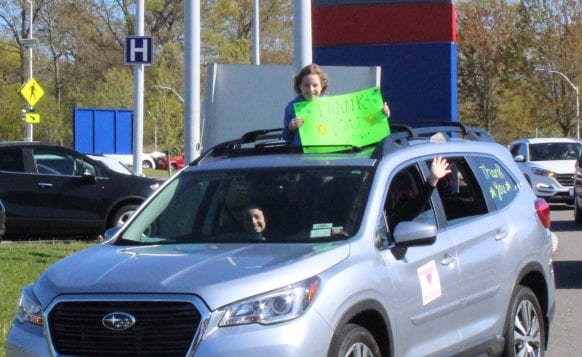
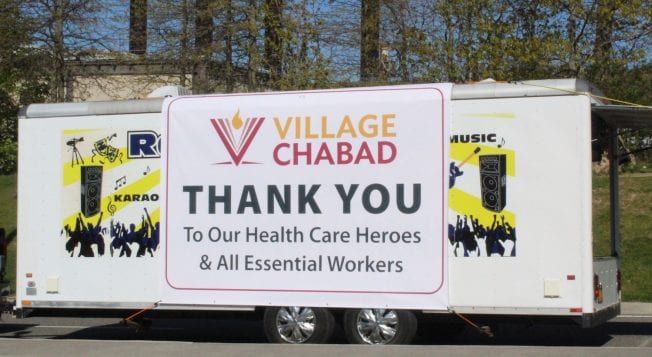
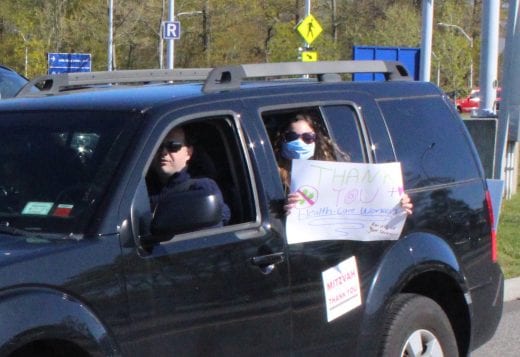
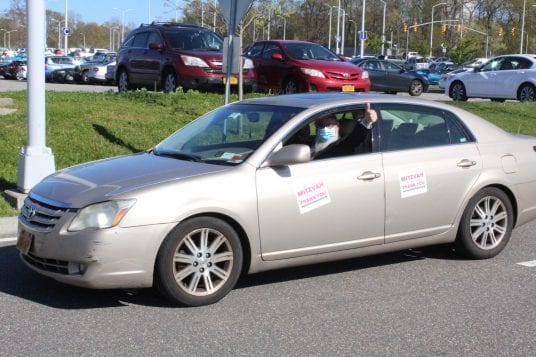
Members of Village Chabad in East Setauket and Lubavitch of the East End organized a car parade to thank the health care workers at Stony Brook University Hospital May 12. Dozens of cars were led past Stony Brook Children’s Hospital and the main building by a Setauket Fire Department truck and SBU police. The group was even joined by a music truck for entertainment.
Dear Engeman Theater patrons,
We hope you are all healthy and safe as this period of uncertainty continues.
It’s been six weeks since Gov. Cuomo closed all non-essential businesses. We have been watching his daily updates, as well as the national news, to try and get some indication of when live theaters will be safely allowed to open again. While we have not been able to determine when that will be, the one thing we do know is that theaters, along with other large places of assembly, will be among the last businesses to be allowed to open.
As a result of this reality, and with keeping people’s safety and health in mind, we have decided to remain closed through at least June 30. This means, unfortunately, that we will need to postpone “Sister Act” again, which we had tentatively moved to the May 14 through June 28 time slot.
This is merely a postponement. Our plan is to reschedule “Sister Act” for later in the year so you will have an opportunity to see it once we are safely allowed to reopen.
Thank you for your patience and understanding. To be clear, there is nothing you need to do at this time. We will reach out to you with updated schedule information once we know when we can reopen.
We look forward to seeing you back at the theater as soon as it is safe to do so. We will continue to update you when we receive new information. Until then, please stay well.
Richard Dolce and Kevin O’Neill
John W. Engeman Theater Producers
Mills Pond Gallery takes heart that some communities across the country are beginning to see fewer cases of COVID-19, but we remain concerned about the well-being of our artists, staff, gallery visitors and families in our communities. Therefore, out of an abundance of caution, we have made the decision to postpone many of our planned gallery exhibitions. Visit our exhibition page for schedules www.millspondgallery.org.
We have posted our Summer Art Classes Program on our website, offering over 30 creative art classes for children ages 5 and up. Class sizes will be kept small to continue social distancing and strict cleaning and disinfecting procedures will continue throughout the summer.
We recognize this is a challenging time for artists, schools, teachers and communities. At the same time, we are encouraged as we see creativity flourishing everywhere as people quickly adjust to a changing reality. It is certainly reassuring to see so many organizations and families do so much to ensure that arts, culture and creativity remain a part of our lives.
We believe the arts are indispensable in building good character in the citizens of our communities fostering communication, offering new insights on the world and adding to the greater appreciation of both life and society. We look forward to reopening soon, engaging you with the arts so you are able to See What the Arts Can Open Your Eyes To!
We look forward to brighter days, good health and healing for all!
Allison J. Cruz
Executive Director
Mills Pond Gallery
Car parades to celebrate birthdays and other momentous occasions have become popular during the pandemic as people look for alternate ways to commemorate their loved ones’ milestones.
On May 9, a short distance from the TBR News Media office, a car parade was held for Siena Figliola who turned five the day before.
In addition to her father, Anthony, mother, Christine, and siblings 7-year-old Anthony and 14-month-old Celine on hand, friends, family members and her fellow Setauket Elementary School pre-K classmates headed down her street.
Her mother said the family had an amazing time.
“It was so wonderful seeing the children with big smiles on their faces,” she said. “For a brief moment parents and their kids were able to forget about what was going on in the world and just be happy. The pre-K class was adorable — the children hanging out of their car with signs, birthday cards and presents. One dad retrofitted his car with microphones and flashing lights.”
Christine Figliola said the hope was to not only celebrate her daughter’s birthday but also give other children a “small break from the lack of normalcy they’ve all been experiencing.” During the birthday parade, participants received curbside favors, treats and goodie bags, handed out from a safe distance.
The mother said her daughter has been taking the recent changes to everyday life in stride and enjoyed her big day.
“I know she will look back on this time, and it will be a birthday for her in the history books,” Figliola said.
Ah to sing the song of you, my matron mighty!
My sacred one, my mother.
—from “Delicate Cluster” by Walt Whitman
By Irene Ruddock
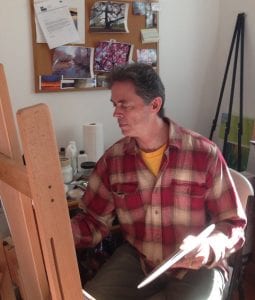
Ron Becker’s talent as a muralist was expressed at any early age where he designed and painted murals at his elementary, junior, and high school. Later, after he received a degree in art from Niagara County Community College (NCCC), he went on to be an art display director. His life took a dramatic turn when he successfully pursued a professional career in entertainment: modeling, acting, singing and dancing in summer stock, television and nightclubs.
Ron eventually began a 27-year career as Director of Therapeutic Recreation in hospitals and nursing homes, where he combined all of his skills in the arts. Today, he is immersed in the fine art world exhibiting leadership skills that have led him to become a former president of the Deer Park Arts Council, while currently serving on the Community Advisory Board of Suffolk County for the Arts, as well as board member on the Babylon Citizens Council of the Arts. Being a lover of the outdoors all his life, he started painting landscapes and nature scenes in oil and acrylic and, today, devotes much of his time to exhibiting in art shows and galleries on Long Island.
How did your art career evolve when you were young?
Raised in western New York, my talent was supported and nurtured by my parents and teachers. I was asked by my fourth and eighth grade teachers to make murals using pastels, and stayed after school to work on them. I attended a summer art camp in Niagara Falls in ninth grade and as a senior in high school I attended a summer camp for artists near Watertown, New York. These opportunities helped expand my confidence and artistic talent. Finally, I attended NCCC and received my Associate’s degree with a major in art, helping to solidify techniques in drawing and painting.
Your career as a muralist has spanned your entire life. What project was most rewarding?
Overseeing murals in Deer Park allowed me to work with the Long Island Railroad, Deer Park Community Association and eight other artists, to complete twelve large mural boards under the Long Island Railroad train trestle. It was very rewarding to help give artists a voice and give something lasting to the community. Painting murals in primary and elementary schools through the Eastern BOCES services gave me the opportunity to work with young artists and show them how a mural is done, start to finish. Their joy and ongoing interest was infectious. Painting murals in hospitals was a gift as well, seeing the therapeutic outcomes for the patients.
Are you working on anything right now?
I was recently involved with Splashes of Hope, an organization dedicated to creating art to transform spaces by painting murals in health care facilities, comforting patients during their healing process. I was asked to paint a ceiling tile of the Coindre Hall Boathouse, next to the home and art studio for Splashes of Hope, located on the grounds of West Neck Farm in Huntington. The finished tile will be installed in the ceiling above a bed on one of the units in Huntington Hospital. I encourage artists who want to paint, with a humanitarian purpose, to contact Splashes of Hope at www.splashesofhope.org.
I have learned that you work extensively for charities that supports the arts. Can you tell me about that?
I became president of the Deer Park Arts Council, a non-profit charity that advocates for and supports the visual and performing arts in the Deer Park School District. I worked with the board to spearhead a variety of fundraising events to offer summer workshops and programs for students to expand their training in the arts, as well as offering financial scholarships to outgoing seniors.
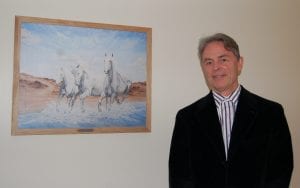
What is your most recent charitable contribution?
Since I spent twenty-seven years as Director of Therapeutic Recreation at nursing homes and hospital, I fully understand the therapeutic value art has for the disabled or sick. Therefore, when I was asked to donate a painting for Mather Hospital’s newly renovated oncology wing, I chose a painting of wild horses galloping on the shore titled Joyous Abandon.
Tell me about your years as Director of Therapeutic Recreation at nursing homes and hospitals.
While Director of Recreation at two city hospitals, outside of my managerial duties, I taught the residents drawing and painting. I was amazed at their progress, joy, and commitment, which inspired me to curate exhibits and work with galleries to exhibit the resident’s work. The facilities also had auditoriums with stages, so I would create backdrops and environments for concerts and special events.
How did you become interested in the impact of art as a tool of social change?
While on a retreat at Chapel House, I got a vision of doing an exhibit on social justice issues after listening to the song “God Weeps.” The first topic I selected was unjust incarceration. After completing my first three pieces, I was introduced to Bartholomew Crawford, a writer who is presently incarcerated at Sing Sing Correctional Facility, and reached out to collaborate.
How did the two of you proceed?
After sharing the exhibit’s intent, Mr. Crawford agreed to send me four written pieces about his prison experience. I integrated them into a collection of visual and narrative pieces to help tell the experience of life behind bars. Four years of working on this has resulted in an exhibit entitled “My Block.” The exhibition will be housed in the jail of Babylon Old Town Hall, which was in service from 1918 to 1958, and is on the National Historical Register. The show will be rescheduled later this year when guidelines are relaxed and allow for public exhibits.
Can you explain what iconography is and what drew you to work in this genre?
Iconography is the practice of creating icons in the ancient method used by monks centuries ago. Its main mediums are egg tempera and gold leaf on a board covered with linen and a plaster/gesso mix. I wanted to integrate my faith and spirituality into my art on some level and met Janine Manheim, an iconographer, at a local art gallery. She had an icon on display that intrigued me, so since that initial meeting, I have been attending her classes.
Could you explain a bit more about the process of egg tempera as a painting medium?
Egg tempera is a recipe of egg yolk and water mixed with mineral pigment color. It creates a translucent look that I strive to create as shown in my icon, Mother of Tenderness.
Why did you decide to devote your time to fine art creating landscapes in oil and acrylic?
I love to interpret the beauty all around us, hoping to motivate others to slow down and see and feel what I experience in nature. Painting is relaxing and allows me to express my inner self, visually. A year before retiring, I turned half my garage into a studio, experimenting with different techniques in both oil and acrylic to help find my voice. Taking photographs while on trips or here on Long Island, I began to interpret what visually excited me. Once I felt confident in sharing some of my work with the public, I began to show my work in outdoor art fairs and in member shows on Long Island.
What has been your best experience so far?
I had a one- man show, “An Artist’s Nature,” at the Bayard Cutting Arboretum in 2019, allowing me to exhibit 43 pieces I had created over the last several years. It was an amazing experience to see all of my work in one space, that could really present my artistic style. I also exhibited at the Roosevelt Island Visual Arts Association, an ethnically diverse group of artists dedicated to enhancing cultural developments through the arts. Due to the success of these shows, I have ventured into exhibiting at several galleries on the Island. I now sell my work through my website www.rbeckerart.com.
